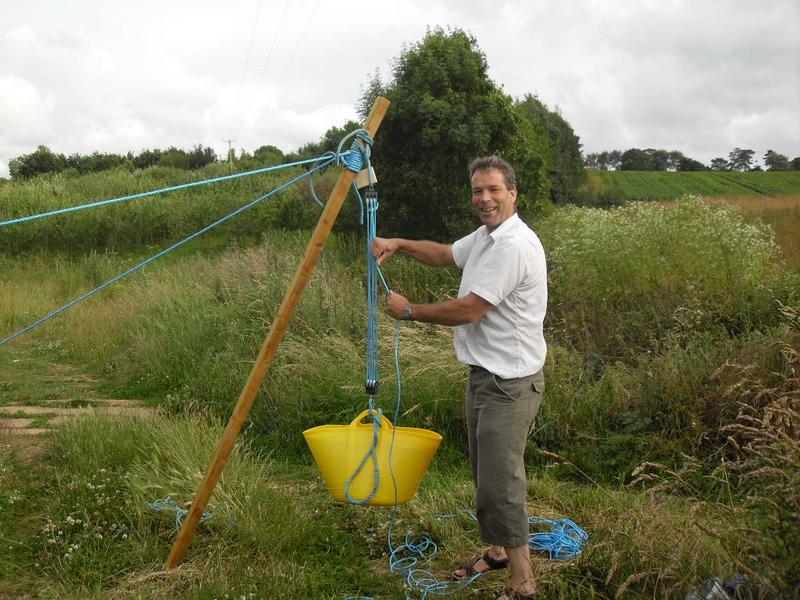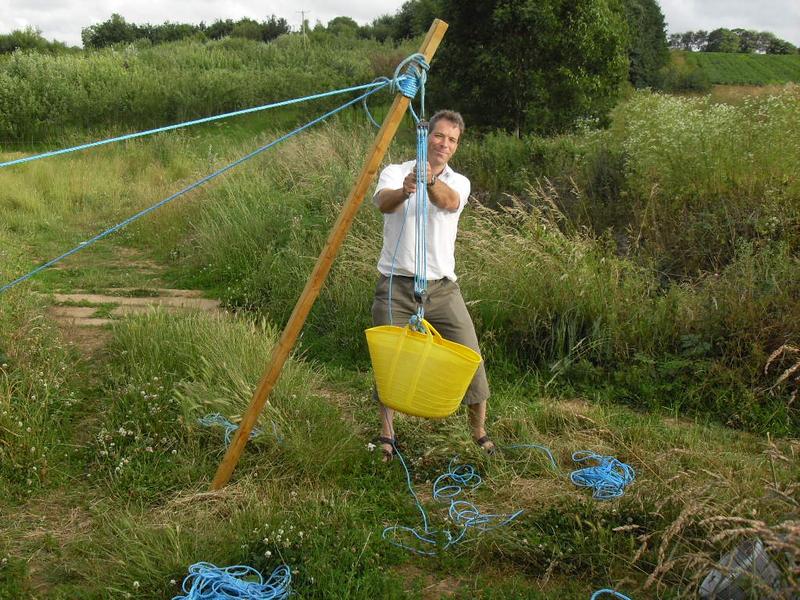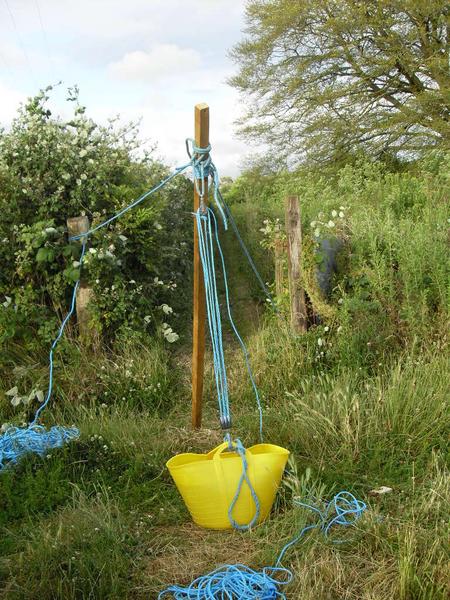
Gave it a try with what I had to hand - rigging a gin-pole.
Not a very impressive length pole and soon found that rope doesn't grip smooth square timber very well (thinking of Rolling Hitch gripping any cylindrical object). By hey - participating is all about finding these things!
And couldn't be bothered to grub around in the nettles to put the guy-line to the bottom of the left-hand-side pole (last picture) - just dropped a clove-hitch formed in the standing rope over the top of the post.
Anyway - always happier after achieving a rough-and-ready "version 1" than if it is all theoretical and unknown ahead of you.
So here it is - courtesy of friendly passing dog-walkers offering to take a photo.
The load is 4 buckets of water from the nearby stream poured into this building-site tub. So not a load you'd want to lift unaided!



Knots used...
The lowest component is a "whipping" of rope around the square pole to
try to grip and hold the pole - stop the structural knots above from
slipping down the pole.
Moving upwards, the guy rope has a Constrictor Knot formed in the
standing rope with I dropped over the top of the gin-pole and
tightened-up as much as possible.
At the top there are a couple of Rolling Hitches to hold the
stationary top-block (hadn't a short enough strop to do a useful
Strop-Hitch on this small pole).
Now - I'm not saying that's how you should do it - that's what I
improvised on the day for this awkward square smooth slippery
timber...
(12 July 2009 Correct way to rig a gin-pole according to the American Military - external link Gin-pole at TPUB. This shows that the lashing ("whipping") of rope around the pole should itself suspend the top / stationary / shackle - block - and that the rope cannot be relied upon not to slip unaided - you need to nail cleats above and below the stack of knots.)
The blocks are small leisure sailing-boat blocks from a marine chandlers. This is a 3-by-3 setup, which should give a 6-to-1 mechanical advantage (it gives a 6-to-1 velocity ratio - you have to pull 6 times the length of rope out over the lead sheave for every 1 length the load moves - while friction reduces the true mechanical advantage below the velocity ratio). You must know the correct way to reeve (pass the rope around) the blocks!!! (USMil - Fig. 6-6 and Fig. 6-13 )
(R Smith, 05 July 2009)